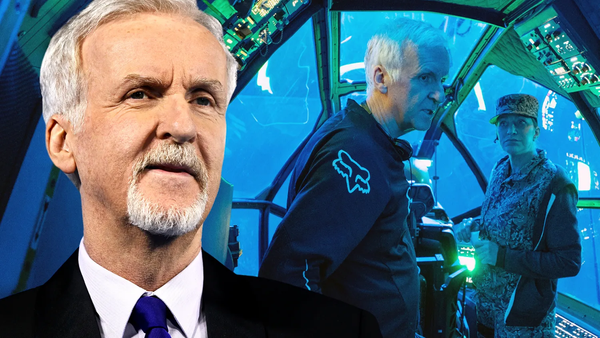How a secretive right-wing Catholic cult took over DC

From New York: "In 1998, a prematurely silver-haired, baby-faced priest named C. John McCloskey was dispatched by Opus Dei, the secretive right-wing Roman Catholic group, to Washington, D.C., to minister to some of the world’s most powerful men. He arrived at the Catholic Information Center, which the organization runs, on K Street, the lobbying district of the nation’s capital. Father John is gone — removed from his post by a sex-abuse scandal, he died last year — but the CIC is still on K Street. it is focused on marshaling the people who have various forms of authority over the masses (Opus Dei reportedly calls them the “intellectuals”) to its various revanchist causes. The group targets, and attracts, people like Donald Trump’s current running mate, J.D. Vance, a convert to conservative Catholicism by way of Opus Dei–connected clergy and influencers. Opus Dei runs colleges and elite private schools as well as institutions like the CIC, all designed to attract and mold the influential."
Doctors customize brain surgery so patient doesn't lose his ability to play chess

From Scientific American: "Last year, when doctors told a patient that the headaches he was experiencing were due to a highly invasive brain tumor called a glioblastoma that could only be removed during a complex surgery, he had one very specific request. He wanted the surgeons to make sure to preserve his ability to play chess. The man, a then-45-year-old computer programmer, was identified only as “AB.” He had been playing the game as a hobby for 25 years and had achieved an Elo rating of 1,950, which is just one level below expert in the chess world. Surgeons performed a craniotomy, removing a piece of skull to expose a portion of AB’s left superior parietal lobe while he was awake. Next they touched a live electrode to different spots on the surface of his cerebral cortex, asking him to answer questions and complete tasks in order to determine whether his cognitive abilities remained intact at the targeted spot."
French dig team finds an archaeologist's 200-year-old note in a bottle

From the BBC: "A team of student volunteers on an archaeological dig in northern France has had a surprise communication from the past. Sifting through the remains of a Gaulish village on cliff-tops near Dieppe on Monday, they uncovered an earthenware pot containing a small glass flask. It was the kind of vial that women used to wear round their necks containing smelling-salts. Inside the bottle was a message on paper, rolled up and tied with string. On Tuesday evening, Mr Blondel opened the paper – which read as follows: “P.J Féret, a native of Dieppe, member of various intellectual societies, carried out excavations here in January 1825. He continues his investigations in this vast area known as the Cité de Limes or Caesar’s Camp.” Féret was a local notable, and municipal records confirm that he conducted a first dig at the site 200 years ago."
The parrot that kept a dying language alive

From Mental Floss: "During his exploration of the Orinoco river in 1799, German geographer and naturalist Alexander von Humboldt met and stayed with a local indigenous Carib tribe near the isolated village of Maypures. The tribe, so the story goes, had a number of tame parrots kept in cages around the village, many of which had been taught to speak—although one, Humboldt noted, sounded different from the rest. When he asked the locals why this parrot sounded so unusual, he was told that it had belonged to a neighboring tribe, who had been the Caribs’ enemies. They had violently ejected them from their land, and hounded the few tribesmen who remained onto a tiny islet in the middle of the nearby rapids. There, the last of the tribe had died in total isolation several years earlier—taking with them their entire culture. This talking parrot was, consequently, the last creature alive who spoke their language."
Gigantic wave in the Pacific ocean was the largest rogue wave on record

From Science Alert: "In November of 2020, a freak wave came out of the blue, lifting a lonesome buoy off the coast of British Columbia 17.6 meters high (58 feet). The four-story wall of water was finally confirmed in February 2022 as the most extreme rogue wave ever recorded. Such an exceptional event is thought to occur only once every 1,300 years. For centuries, rogue waves were considered nothing but nautical folklore. It wasn't until 1995 that myth became fact. On the first day of the new year, a nearly 26-meter-high wave (85 feet) suddenly struck an oil-drilling platform roughly 160 kilometers (100 miles) off the coast of Norway. Scientists define a rogue wave as any wave more than twice the height of the waves surrounding it. The Draupner wave, for instance, was 25.6 meters tall, while its neighbors were only 12 meters tall. In comparison, the Ucluelet wave was nearly three times the size of its peers."
Like a roller coaster but without the curves
Roller Coaster....light version.
— Figen (@TheFigen_) September 17, 2024
pic.twitter.com/aotEn7LJtz
Acknowledgements: I find a lot of these links myself, but I also get some from other newsletters that I rely on as "serendipity engines," such as The Morning News from Rosecrans Baldwin and Andrew Womack, Jodi Ettenberg's Curious About Everything, Dan Lewis's Now I Know, Robert Cottrell and Caroline Crampton's The Browser, Clive Thompson's Linkfest, Noah Brier and Colin Nagy's Why Is This Interesting, Maria Popova's The Marginalian, Sheehan Quirke AKA The Cultural Tutor, the Smithsonian magazine, and JSTOR Daily. If you come across something interesting that you think should be included here, please feel free to email me at mathew @ mathewingram dot com



